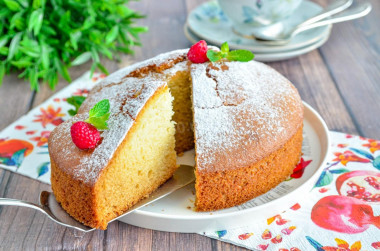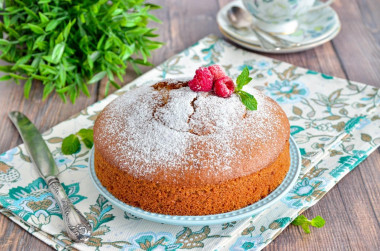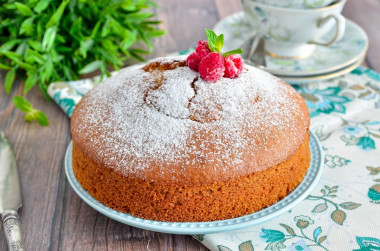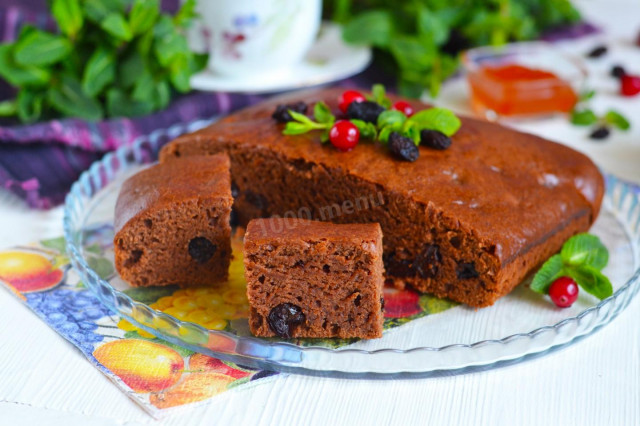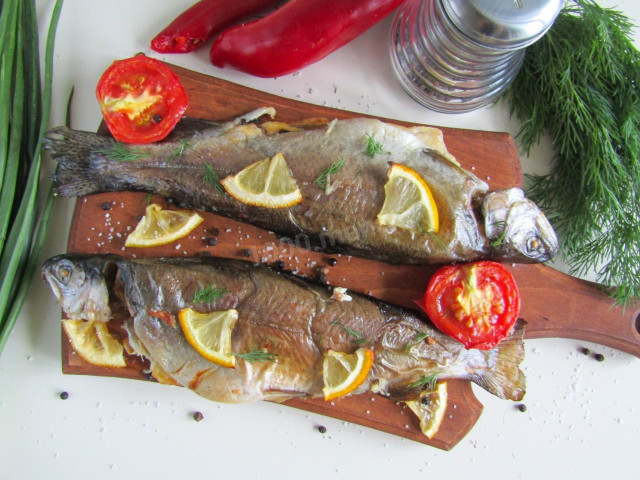Composition / ingredients
Step-by-step cooking
Step 1:
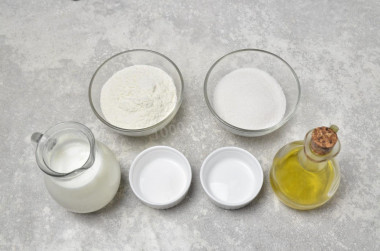
How to make a sponge cake without eggs in the oven? Prepare the products. Kefir is suitable for any fat content, it does not matter. Take refined, odorless vegetable oil. The amount of flour may differ from what is stated in the recipe — you will look at the consistency of the dough. It took me less.
Step 2:
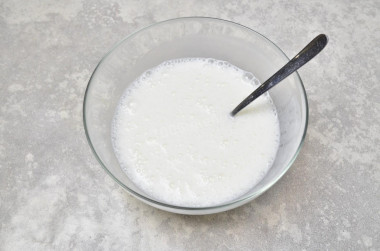
Pour kefir into a saucepan and heat it on the stove until warm. Make the fire small and stir constantly, otherwise the kefir may be stratified. Pour the kefir into a bowl and pour the soda into it. Stir and immediately add sugar. Stir the mixture well again to dissolve the sugar grains. Leave to stand for 5 minutes.
Step 3:

During this time, soda will react with the acid contained in kefir, as a result, carbon dioxide will be released, which will raise the biscuit. The mass will increase in volume, and a foam cap will form on the surface. Pour in the vegetable oil, mix.
Step 4:
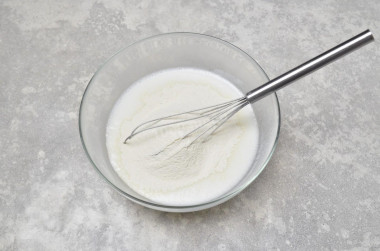
Start pouring flour into the kefir mixture in portions, sifting it through a sieve. This will not only remove possible debris, but also saturate the flour with oxygen, which will make the baking more lush. After each addition, knead the dough with a whisk. At the very end, add a little vanilla.
Step 5:
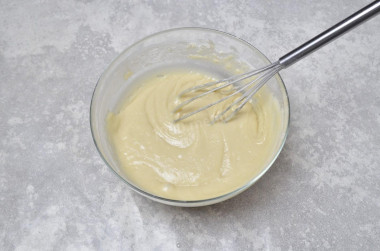
The consistency of the dough should be like thick sour cream. I have some flour left.
Step 6:

Take a suitable baking dish. It can be any — detachable, silicone, glass. I took a sliding ring, used foil instead of the bottom. Lubricate the mold with a small amount of vegetable oil. Pour the dough into it.
Step 7:
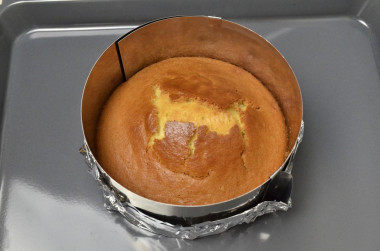
Bake the biscuit in the oven, preheated to 180 ° C, for 30-40 minutes. The exact time will depend on the characteristics of your oven. Check readiness with a wooden skewer — it should come out dry from the middle.
Step 8:

Remove the finished biscuit from the oven, cool and remove from the mold. When serving, sprinkle the top with powdered sugar. Bon appetit!
What is the difference between vanilla, vanillin, vanilla extract and vanilla sugar, how to use and replace them correctly, so as not to spoil the taste of the dish , read in this article .
Is it possible to replace baking powder with soda, how to add them correctly so that the baking is lush, how to avoid an unpleasant soda taste and much more, read the article "Baking powder or baking soda - which is better?"
Keep in mind that everyone's ovens are different. The temperature and cooking time may differ from those specified in the recipe. To make any baked dish successful, use the useful information about the features of ovens !
Caloric content of the products possible in the composition of the dish
- Whole durum wheat flour fortified - 333 kcal/100g
- Whole durum wheat flour, universal - 364 kcal/100g
- Flour krupchatka - 348 kcal/100g
- Flour - 325 kcal/100g
- Granulated sugar - 398 kcal/100g
- Sugar - 398 kcal/100g
- Kefir fat - 62 kcal/100g
- Kefir of 1% fat content - 38 kcal/100g
- Low-fat kefir - 30 kcal/100g
- Kefir "doctor beefy" 1,8% fat content - 45 kcal/100g
- Kefir 2.5% fat content - 53 kcal/100g
- Vegetable oil - 873 kcal/100g
- Vanillin - 288 kcal/100g
- Baking soda - 0 kcal/100g


